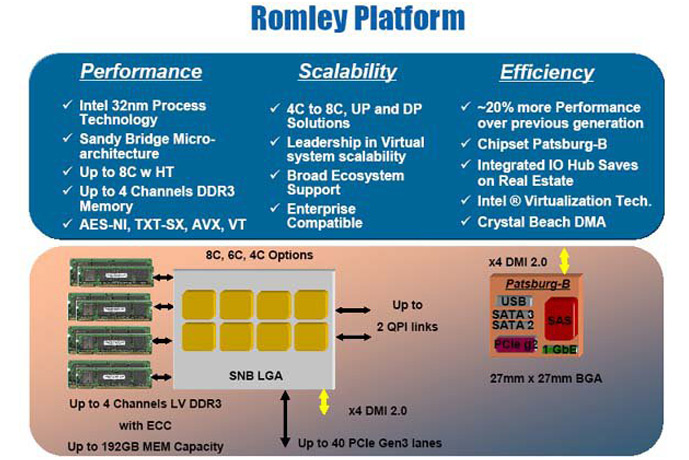Sandy Bridge-E has run into a speed bump, but is heading for retail soon. It will take until the next stepping for servers, C2, instead of C1 that will launch fo retail on Socket LGA2011 and the X79 chipset, dubbed Waimea Bay.
Sandy Bridge-E will be Intel’s biggest and most complicated circuit in a long time. The hexa-core version will be 400mm2 despite 32nm technology, but will then get quad-channel memory and 40 PCI Express 3.0 channels. PCI Express 3.0 is not something has been able to verify due to lack of expansion cards. Therefore the retail version of Sandy Bridge-E will get PCI Express 2.0. It will have 40 PCI Express 2.0 channels, which should be enough for most, but some of the status still disappears.
For servers Intel wants the complete packags, which means it will probably wait until 2012. Then the server platform will get those 40 PCI Express 3.0 channels the processor can handle, and the chipset will get the specifications we first heard rumors of. The problem is not that PCI Express 3.0 is not working, but Intel can’t verify it to be compatible with coming PCI Express 3.0 expansion cards.
 Intel Patsburg (X79 for retail) will then have four PCI Express 3.0 channels dedicated for storage bandwidth, six SATA 6.0 Gb/s, four SATA 3.0 Gb/S, 14 USB 2.0, with support for numerous RAID technologies and Intel’s own solutions. The only thing missing will be USB 3.0, but how this affects clients in the server sector, or those looking for performance in workstations is up for discussion.
Intel Patsburg (X79 for retail) will then have four PCI Express 3.0 channels dedicated for storage bandwidth, six SATA 6.0 Gb/s, four SATA 3.0 Gb/S, 14 USB 2.0, with support for numerous RAID technologies and Intel’s own solutions. The only thing missing will be USB 3.0, but how this affects clients in the server sector, or those looking for performance in workstations is up for discussion.
Another problem that sits in the processor is that stepping C1 that will be released for retail, does not support VT-d (Virtualization Technology for Directed I/O). The function is deactivated in C1 processors since it is not working right. Intel therefore waits for the C2 stepping that will hopefully solve the problems with VT-d. By then it should also be able to test and verify PCI Express 3.0 that Sandy Bridge-E is actually capable of.
Source: VR-Zone















